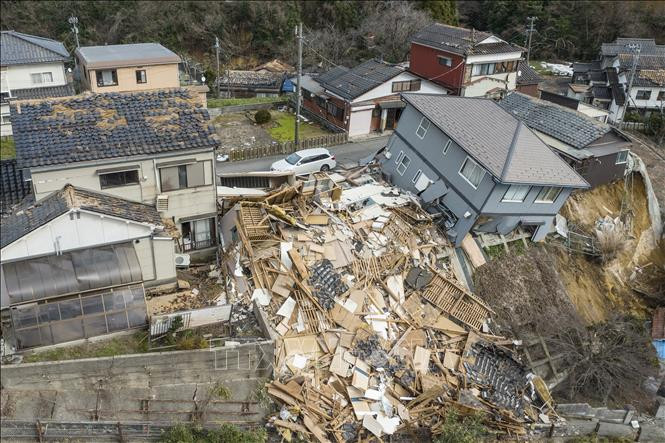The death toll from a series of powerful earthquakes that shook the Noto Peninsula in Ishikawa Prefecture and coastal areas in central Japan has risen to 48.
The Japanese government has dispatched a search and rescue force of 3,000 police, soldiers and firefighters from across the country to the earthquake area.

Speaking at an emergency meeting the same day, Prime Minister Fumio Kishida stressed: “Search and rescue work in the earthquake areas is a race against time.” He said rescue teams are facing many difficulties in accessing the earthquake-hit areas. Helicopter surveys showed that many buildings and other infrastructure were severely damaged and many fires broke out.
About 120 people are waiting to be rescued, according to a Japanese government spokesman. Meanwhile, Japanese Chief Cabinet Secretary Hayashi Yoshimasa said authorities had received about 900 emergency calls following the earthquake.
The initial 7.6-magnitude quake and more than 155 aftershocks caused extensive structural damage and numerous fires in Wajima City, Ishikawa Prefecture, local officials said. Roads were destroyed, while more than 33,000 households were left without electricity and running water. More than 1,400 passengers were affected as Shinkansen trains in the disaster area were suspended.
According to NHK, Noto Airport was forced to close due to runway cracks and other serious damage to the terminal area. At present, 500 people are still trapped in the airport's parking lot. In addition, the series of earthquakes also injured many people and damaged many structures in the neighboring Niigata, Toyama, Fukui and Gifu prefectures.
NHK quoted Japan's Geospatial Information Agency (GSI) as saying that the 7.6-magnitude earthquake may have caused the mainland in the Noto region near the epicenter to move up to 1.3 meters to the west.
According to the agency's analysis of GPS data, a monitoring point in Wajima City recorded the largest displacement, about 1.3 meters to the west. Meanwhile, the land in Anamizu Town moved about 1 meter and in Suzu City moved 80 centimeters to the west. A monitoring point in the Notojima area of Nanao City recorded a displacement of 60 centimeters to the northwest toward the Sea of Japan. Some neighboring areas also moved a few centimeters. GSI plans to continue analyzing similar data.
TH (according to Tin Tuc newspaper)